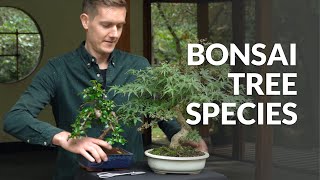Hinoki cypress Bonsai Care guidelines
The hinoki cypress needs a place in full sun during the growing season. In winter it also needs much light. Protect the trees against hard frost and icy winds.
Water the hinoki cypress as soon as the soil gets dry, but don't keep the roots soaking wet all the time. Use lime-free water. In winter water less but never let the rootball dry out completely. The foliage likes humidity and can suffer when exposed to hot dry wind. Continue reading about watering Bonsai trees.
Watering
Free lecture from the Beginners CourseApply solid organic fertilizer every four weeks or use a liquid fertilizer every week during the growing season.
The foliage must regularly be trimmed in order to remove excess and overlapping fan-shaped shoots which would shade the inner and lower twigs. If the inner leaves are not exposed to sufficient sunlight they will die and not regrow. The branches of the hinoki bonsai take some time to keep their wired positions. It will be necessary to rewire them several time. Styling can be done at any time of the year. Continue reading about pruning Bonsai trees.
Repot the hinoki cypress every two to four years, very old specimens can wait even longer. The roots grow quite quickly and can be pruned considerably. Use a well-draining soil mix, but in hot climates add a bit more humus for water retention. Hinoki cypress does not like lime and prefers slightly acidic soil. Continue reading about repotting Bonsai trees.
The chamaecyparis can be propagated from seed, softwood cuttings and by air-layering. Seeds need a cold pre-treatment and can take a year to germinate. Softwood cuttings are best taken in late summer.
Scale and spider mites sometimes bother the hinoki cypress Bonsai, then use a specific pesticide. If tip blight occurs, a special fungicide is needed. For more detailed information on these techniques, check out our Bonsai tree care section.

Hinoki bonsai tree

Foliage of the Hinoki

Japanese cypress bonsai

Hinoki Cypress by Jonas Dupuich
General information about the Hinoki cypress Bonsai tree
The hinoki cypress can grow up to 40 meters (130ft) tall and the trunk can reach a diameter of 3 meters (10ft). The scale-like leaves are dark green and form flat fanning fronds. The bark is reddish brown and peels in strips. The hinoki cypress is a monoclinous plant which produces globular cones containing small winged seeds.
As a bonsai, this species needs constant foliage maintenance, because if the trees are not pruned frequently the lower and interior branches will not get sufficient sunlight and die. There are a few dwarf cultivars which are very well suited for small bonsai, like Yatsubusa, Chirimen and Sekka, with very small and compact foliage.
Chamaecyparis obtusa bonsai 'Nana gracilis' is a nice dwarf ornamental tree but rather difficult for bonsai as it does not bud from old wood. It is usually grafted and the rootstock often produces an ugly swelling at the trunk base. If you need help identifying your tree, take a look at our Bonsai tree identification guide.



 Watch
Watch 


